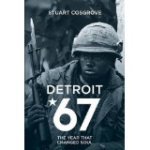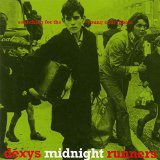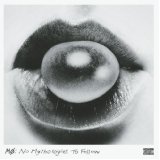 The difficulty is knowing where to start here. Michael McDermott’s output over the last two years as The Westies and a solo artist has been prolific and profound. Making up for lost time; who knows? Michael’s four years clean and sober; 2016’s “Six on the Out” and “Willow Springs” made references to his lost years, while “Out from Under” tells the whole story from degradation through rehabilitation to redemption, pivoting around the album’s central song “Out from Under” and the decision to take responsibility for his life.
The difficulty is knowing where to start here. Michael McDermott’s output over the last two years as The Westies and a solo artist has been prolific and profound. Making up for lost time; who knows? Michael’s four years clean and sober; 2016’s “Six on the Out” and “Willow Springs” made references to his lost years, while “Out from Under” tells the whole story from degradation through rehabilitation to redemption, pivoting around the album’s central song “Out from Under” and the decision to take responsibility for his life.
“Out from Under” isn’t just about the personal narrative; Michael’s been influenced by many different styles of American music and many of those influences surface on this musical journey. This is Michael’s story channelled through the American songbook. With a project this ambitious, you need a great team and it doesn’t get much better than Heather Horton on violin and vocals and Will Kimbrough on, well, anything with strings really.
The album opens with the brooding, menacing “Cal-Sag Road”; it’s about as low as you can get, a tale of drunkenness, sex and murder. It’s underpinned by Will Kimbrough’s atmospheric, ambient guitar sounds and the darkness of the arrangement mirrors the subject matter perfectly. The first half of the album runs through the ragtime resonator and banjo arrangement of “Gotta Go to Work”, the Southern boogie and “Sympathy For the Devil”-like backing vocals of “Knocked Down” to the Tom Petty-esque “Sad Songs”, depicting the malaise and lassitude of the music business. And then you hit the bottom.
“This World Will Break your Heart” is a pathos-packed series of vignettes pulling in dropouts, miscarriages and loneliness in old age. It’s the most heart-breaking song on the album and you know that things have to brighten up from here on in. And they do; It’s big, it’s anthemic and it has a hint of Springsteen. “Out from Under” is a floor-tom-driven monster of a song that’s as uplifting as anything you’ll hear this year. It’s the way forward, pointing the way for the second half of the album beginning with the idyll of “The Celtic Sea” where a sea voyage serves as a metaphor for the beginning of a redemptive relationship; it’s turbulent at first, but the crew pull together and the voyage looks set to succeed.
The three songs which follow are pure, joyous, celebration of love. “Rubber Band Ring” is a horns and Hammond Motown-style stomper, “Never Goin’ Down Again” sets a commitment to reform against a stadium rock background, while “Sideways” combines gorgeous Stax stylings with a lyrical style that leans towards Dylan or early Springsteen. And then you have the gentle acceptance of a new life in “God Help Us”.
“Out from Under” is a hugely ambitious album that follows Michael McDermott’s personal narrative and succeeds in combining an exploration of the highways and byways of American popular music with creative and poetic lyrics. I haven’t heard anything better this year.
“Out from Under” is released in the UK on Friday May 18, 2018.
Don’t take my word for it, listen to it here and then buy a copy.
It’s time to move away from albums, gigs and photos for a while and take a look at some of the music-themed books that have kept me sane on buses, trains and planes during 2015. By sheer chance, I’ve managed to pick out quite a nice variety of styles and themes, so the selection staggers from light-hearted memoirs through serious autobiography to high technology and serious crime (no, I don’t mean the new Coldplay album). So, as ever, in no particular order, here we go.
 “How Music Got Free” – Stephen Witt
“How Music Got Free” – Stephen Witt
There’s a myth that’s been perpetuated about the origins of the current situation where we have a generation that won’t pay for music and a generation that doesn’t even recognise the concept of paying for music. What Stephen Witt’s book achieves is a comprehensive demolition of the myth that file-sharing came about because of some sort of people’s revolution where millions of like-minded people decided to share their digital music collections. This well-researched work picks out the various converging paths ultimately leading to the digital devaluation of music. The book explores the bureaucracy that bedevilled the adoption of a standard compression algorithm, the greed of the major music labels as they rushed into the highly lucrative CD market, the failure of the majors to react to the phenomenon of file compression (and increasing online transfer speeds which made sharing a viable proposition) and the outright criminality involved in stealing and counterfeiting masters from CD pressing plants. It’s a fascinating but ultimately depressing book.
 “Detroit 67: The Year that Changed Soul” – Stuart Cosgrove
“Detroit 67: The Year that Changed Soul” – Stuart Cosgrove
Stuart Cosgrove has picked out a pivotal year in the history of Motown and imposed a structure of a chapter per month (it works pretty well) which sets the upheavals at Motown against a backdrop of riots in Detriot, unrest in the police force and a general national malaise. Berry Gordy plays a central role in the well-known story of Diana Ross’s advancement at the expense of the other Supremes (and the expulsion of Florence Ballard), but Stuart Cosgrove delves deeper into the sickness at the heart of the company, dealing with the unease of major artists and the ultimate defection of the Holland/Dozier/Holland writing/production team. The book goes far beyond music biography by showing these events in the context of a city in meltdown with riots on either side of the racial divide and a brutal, corrupt police force fanning the flames. It’s a fascinating read, although there are far too many typos in the Kindle edition.
 “Fortunate Son” – John Fogerty
“Fortunate Son” – John Fogerty
Confession time: the first song I performed in public was Creedence’s “Up Around the Bend” in a school band which included some good musicians and a future nuclear physicist, and me. I was a fan from an early age. “Fortunate Son” is John Fogerty’s attempt to put the record straight after accusations and counter-accusations, suits and counter-suits with his former band members Doug Clifford and Stu Cook. The book is unflinchingly honest throughout; John Fogerty isn’t trying a whitewash here. He owns up to his mistakes and errors of judgement and this gives him the right to expose others’ lies and hypocrisy. It’s difficult not to empathise with him in his battles with Saul Zaentz and the former Creedence members: he wrote the songs, after all. “Fortunate Son” pivots around John Fogerty’s meeting with his second wife, Julie, who brought order to his chaotic life and pushed him back towards popular and critical recognition. It’s good, it’s honest, it’s straightforward and it’s delivered in an authentic John Fogerty voice.
 “Unfaithful Music and Disappearing Ink” – Elvis Costello
“Unfaithful Music and Disappearing Ink” – Elvis Costello
Declan McManus has an awful lot of stories to tell and, not surprisingly, he has a gift for writing and storytelling. “Unfaithful Music…” is a cracking read, giving an insight into the creation of some wonderful music, and life in the music business bubble. The book doesn’t follow a straightforward chronological structure; it’s much more like a conversation in the pub with each observation triggering another digression. There are some difficult events to deal with (the Stephen Stills/Ray Charles incident for example) and they’re all dealt with in a very matter of fact way. The book skips over some big chunks of Elvis Costello’s life, but the ones he does tackle are done with honesty and candour. The names that crop up as the story unfolds are a history of popular music, but this never feels like name-dropping, they’re just people who happen to have been around at certain times. This is a wonderful book.
“ Rock Stars Stole My Life” – Mark Ellen
Rock Stars Stole My Life” – Mark Ellen
Mark Ellen’s memoir is a breezy and self-deprecating run through a life as a pop journalist, radio presenter, TV presenter and publisher. He gives an inside view on life at the NME in the seventies, The Old Grey Whistle Test and the Live Aid broadcast, all delivered in a jaunty style that’s very easy to read. He’s met and worked with some amazing people (again, it’s all matter-of-fact rather than name-dropping), but being a member of Ugly Rumours with Tony Blair takes some beating. Most of the book is fairly gentle humour, smiles rather than guffaws, but Mark Ellen saved the best for last. His account of the mayhem aboard Rihanna’s ill-conceived and farcical round-the-world-in-seven-days tour made me laugh out loud. The entire book’s funny, but this piece was hilarious.
If you don’t see anything you fancy there, Chrissie Hynde’s “Reckless” and Bob Harris’s “Still Whispering After All These Years” are both well-written and interesting biographies.
 So, this is the first in a new series of features about hearing great albums for the first time and the impact those albums had on us. To start the series, I’ve picked an album which will be thirty-five years old this year and it’s certainly wearing a lot better than I am. It’s the Dexys Midnight Runners debut album “Searching for the Young Soul Rebels”. It was released on July 11th 1980 and peaked in the UK album charts at Number Six, but that doesn’t tell you anything like the whole story. This is an album that is still revered by thousands of fans and regularly appears in best albums of all time charts. As far as I’m concerned, I’m still happy to pull out my vinyl copy of the album any time, stick it on the SL1200 and listen from start to finish; it’s still a great piece of work and, like all classics, people love it for different reasons, not all of them musical.
So, this is the first in a new series of features about hearing great albums for the first time and the impact those albums had on us. To start the series, I’ve picked an album which will be thirty-five years old this year and it’s certainly wearing a lot better than I am. It’s the Dexys Midnight Runners debut album “Searching for the Young Soul Rebels”. It was released on July 11th 1980 and peaked in the UK album charts at Number Six, but that doesn’t tell you anything like the whole story. This is an album that is still revered by thousands of fans and regularly appears in best albums of all time charts. As far as I’m concerned, I’m still happy to pull out my vinyl copy of the album any time, stick it on the SL1200 and listen from start to finish; it’s still a great piece of work and, like all classics, people love it for different reasons, not all of them musical.
So, just let me give you a bit of context here. In October 1979, the final year of freedom before joining the real world was just beginning. The final year of university, a last chance for free gigs and as much DJing as I could wedge in before finally trying to justify four years of a local authority grant. We were just starting to read in the NME about some new bands and styles emerging in London and the West Midlands and coming to terms with the prospect of five years of Thatcher (if only we knew then…). A lot of the new music seemed to have a harder edge; punk had come and gone but it had left behind a feeling that anyone could be in a band. The university circuit was a great place to see bands and I was lucky enough to be at a university that was on the circuit (ok, Dundee, if you must know). It was going to be an interesting year.
During the usual beer and catch-up session with the Ents crew (the PC alternative to trying to seduce freshers) we would talk about music we’d bought between June and October (don’t those holidays seem incredibly long now?) and the bands we’d seen. There weren’t a lot of those if you lived in Mansfield. In October 1980, Phil Madvert (our Ents Committee cartoonist, poet and poster designer) came back from Birmingham all fired up about this new band called Dexys Midnight Runners that were going to be huge; yeah, of course mate, just like City Boy. But Phil was absolutely on the money and we were gracious enough to admit it when we heard “Dance Stance”; this was the real thing.
On February 3rd 1980 (less than a week before their first Top of the Pops appearance) Dexys played at Dundee University Students’ Association. They DJ on the night was incredible- yeah, ok, it was me and I was scared shitless because I’d read all about Kevin’s perfectionism. Anyway, I scraped through and Dexys were stunning; I was already converted before the album was even released. When the album finally came out, I was back in the real world, working for a living and realising how different (and how much harder) it was. Even though three songs from the album had been released as singles (and “Geno” had topped the charts) I couldn’t wait to hear how it had all been put together.
Now, please tell me I’m not the only person who did this; I got back home with album at about 11am on Monday morning, I put the album on the deck, dropped the stylus and heard the very quiet sound of a radio being tuned across the dial (if you’re younger than 45, ask your parents about that) so I turned up the volume until I could hear “Smoke on the Water”, “Holidays in the Sun” and “Rat Race” in succession through the static, and then the brass intro to “Burn It Down” nearly blew the bloody roof off. Wouldn’t have been so bad, but my dad was on nights; I don’t know who was less popular, me or Dexys.
So, “Burn it Down”; well it was the single “Dance Stance” with a different title, a title that made a lot more sense in the context of the album. There are some tracks that are perfect album openers (how about the Manics’ “Slash ‘n’ Burn” from “Generation Terrorists”?) and “Burn It Down” is one of those, from the radio sweeping the airwaves, through Kevin Rowland’s exhortation to Al (Kevin) Archer and Big Jim to ‘burn it down’, to the brass intro on steroids, it’s perfect. The lyrics were about the stupidity of Irish stereotypes, but you could apply to any of the other racial or gender stereotypes prevalent at the time, even in politically correct students’ unions. And into “Tell Me When My Light Turns Green” with its big opening brass riff, powerfully personal lyrics, Kevin Rowland’s falsetto and the soon-to-be characteristic swooping vocals and a nailed-on trombone solo from Jim Patterson. The line ‘I’ve been manic-depressive and I’ve spat a few tears’ seemed odd at the time, but it makes sense now with some historical context. Even now, “The Teams That Meet in Caffs” is one of the most evocative instrumentals in my collection; it’s note-perfect from the acoustic guitar and bass intro through the entry of the Hammond and then the brass section which takes the lead through the track. The brass is relatively simple, tight ensemble playing until the soaring alto sax solo which takes us up to the fade; it’s the perfect soul instrumental.
“I’m Just Looking”, pulls you in with a whispered vocal and Hammond intro, before settling into a slow, impassioned, vocal backed by more subtle and delicate brass arrangements with lovely use of dynamics to enhance the power of the song. As for “Geno”, well it had already been a hit when the album came out; it was a rabble-rousing, stomping anthem which acknowledged the influence on Kevin Rowlands of Geno Washington and the Ram Jam Band, but with the sting in the tail ‘now you’re all over your song is so tame’. It was about the impact that music can have on a purely visceral level (‘Academic inspiration you gave me none’) and it was spot on for its era.
Side Two (force of habit, I’ve got this on CD as well but I always think of it as vinyl) opens with a cover of Chuck Wood’s Northern Soul classic “Seven Days Too Long”, which is faster than the original and uses the brass section more emphatically to punch out the fills. It’s another acknowledgement of the roots of Dexys music and a great cover. “I Couldn’t Help It If I Tried” is slow and powerful, featuring Kevin Rowland’s full range of vocal tricks and the brass section playing chords and arpeggios to build the mood. There’s even a nice trombone solo from Jim. “Thankfully Not Living in Yorkshire it Doesn’t Apply” is a bit of an interesting one; it’s taken at almost breakneck speed, and the vocal in the verses is entirely falsetto. It just about works but I suspect it isn’t most people’s favourite song on the album.
And then we’re into the home straight with “Keep It”. It’s medium-paced and pushed along by the pulse of the Hammond and brass in the choruses. In common with the final song, the lyrics are about an unwillingness to commit, but I’ll come back to that. And just before the climactic closer, there’s a poem, a bloody poem backed with a sax solo. Listening to it now, it seems less odd than it did then; it’s a love poem about the concept of love and the lies it makes people tell each other and themselves and it works really well apart from the pause after ‘won’t’ which disrupts the flow of ‘We all feel something I won’t pretend just for you’. Poetry critics, feel free to disagree with me.
The final track, “There There My Dear” was released as the taster single for the album in July 1980 and, for me, it summed up Dexys. It roared in on a wave of Hammond and horns before the General Johnson vocal trill pulled us in to the first verse; now that’s how to start a song. Lyrically, it’s in the form of a letter to a character who’s trying hard to be fashionable by not making any mistakes but won’t commit to anything worthwhile. At times the words are shoehorned in, but it really doesn’t matter because it’s a majestic noise. When the breakdown comes at just after two minutes, we’re left with bass, drums and quiet brass and Hammond which gradually build up (after finally bringing in the title of the album) to the album’s message – ‘Maybe you should welcome the new soul vision’ before ripping into the final verse and brass fade. You can probably guess what I did next; yep, flip it over and back to the start again.
So, why did this album have such a big impact on me (and thousands of others) at this time? Well, how about the musical reasons? I grew up listening to a lot of different music in the early 70s, but the soundtrack for the shared musical experiences was basically Stax, Atlantic, Motown and Northern Soul, so the Dexys sound was tapping into a vein of nostalgia, but it was much more than that. This wasn’t just some limp tribute band; they had taken the aggression that punk had spawned and combined it with those old soul stylings. The guitar wasn’t the dominant instrument in the line-up (the only time you really hear a guitar stand out on the album is on “The Teams That Meet in Caffs”, and then it’s an acoustic); it’s all about the horns and the Hammond and Kevin’s tortured vocal. And the thing about the horns is that they are LOUD; it was a deliberate production decision which gives a punchier, punkier sound to the songs. The album isn’t one-paced, there’s a lot of dynamic variation and the horns play punchy fills, tight ensembles, counterpoint and even the occasional solo (but not too many of those).
But we all knew it wasn’t just about the music, there was an attitude (the attitude that had terrified me when I had to DJ just before they played), there was a commitment, there was even a bloody manifesto. There was an insistence on dealing with the press and the public on their own terms; the one-page essays in the press to replace interviews and the communiques that arrived as inserts with the singles. They even kidnapped their own master tapes from EMI to secure a better deal. Attitude? And the rest, mate.
And then there’s the image. The Marlon Brando longshoreman look that supposedly came from the way Big Jim was dressed at a really cold rehearsal (Dexys fans please feel free to correct me if I’m wrong on that). It wasn’t a look that was designed to sell clothes from your boutique (yes, you, Mr McLaren), it was a look that working class kids could understand and copy without paying a fortune and it made them look unified and menacing; it was the group as a gang. They were portrayed as a group of outsiders, united by a common look and a musical vision; you were never quite sure which side of the law they were on (they talked about bunking the train to London in interviews, while they still did them) and anyone could join their gang.
The timing was right; punk had self-imploded and John Lydon had admitted it over two years before with his “Ever get the feeling you’ve been cheated?” question at his final Pistols gig. The Clash had moved on, The Damned had always been a joke, and the rump of the movement was flirting with Nazi iconography and straight-baiting make-up. The epicentre of rebellion had shifted to the West Midlands and it felt more authentic and less stage-managed by the likes of Malcolm McLaren and Bernie Rhodes (although he did feature at the start); it was being led by musicians and it felt so much better because of that.
For me personally, it was a bridge between my teenage years, my student years and the real world that I’d finally dropped into. It was music I loved being made by people that cared and it was intended to be played loud; it’s still a touchstone for judging new albums. That’s how “Searching for the Young Soul Rebels” felt and still feels to me.
 On paper at least it would appear that MØ is unlikely to deviate much from what is a well-established and superior brand of Scandi-pop. With this album being three years in the making, the Copenhagen based twenty-five year old has had time to hone her preferred blend of r’n’b pop with trap leanings and an occasional wander into 1960s reverb-heavy girl group territory. Her competition is undoubtedly strong; Lykke Li, Annie, Robyn and Oh Land to name a few of the female singers who have already demonstrated their worth in the genre over the last decade. But MØ can thankfully hold her own more often than not on this, her debut album, “No Mythologies to Follow”.
On paper at least it would appear that MØ is unlikely to deviate much from what is a well-established and superior brand of Scandi-pop. With this album being three years in the making, the Copenhagen based twenty-five year old has had time to hone her preferred blend of r’n’b pop with trap leanings and an occasional wander into 1960s reverb-heavy girl group territory. Her competition is undoubtedly strong; Lykke Li, Annie, Robyn and Oh Land to name a few of the female singers who have already demonstrated their worth in the genre over the last decade. But MØ can thankfully hold her own more often than not on this, her debut album, “No Mythologies to Follow”.
Album opener “Fire Rides”, one of the new songs which represent the minority here, as over half the album has already been released, is a perfect introduction to MØ’s style and sound. Following a near acapella flurry of swooping, angelic vocals, stop-start post Timbaland beats hit hard against the melancholic melody line before a rave synth adds another, more angular dimension to the chorus. It may sound crowded but it’s a sublime merging of styles. Most impressive of all though are MØ’s vocals, full bodied and soulful with an impressive and expressive range that her contemporaries can’t match. The apocalyptic metaphors on “Fire Rides” are bought to life with her possessed performance on the haunted and yearning verses:
‘What’s it gonna be with the violence?
What’s it gonna be when the fire rides in?
What’s it gonna be when the sound of you and I die out?’
“Maiden”, “Pilgrim” and “Waste of Time” are all previous singles and further represent MØ’s fixation with the music she grew up with. Much like Grimes, contemporary futuristic r’n’b and hip hop have been essential influences to her along with electronic pop music and an ability to subvert these genres subtly and without irony but with heart; this is her specialty. “Maiden” introduces a classic nylon-strung guitar sound that crops up more than once in the album’s playing time and it’s to her credit that she applies these odd stylistic flourishes to her sound and makes it something that is identifiable to her and without contrivance. Producer superstar Diplo appears on the brassy and low-slung “XXX 88” and it’s maybe not surprising that it’s the most commercial moment here but also completely in keeping with the sonic themes of the album. “Don’t Wanna Dance” and the slowly chiming “Never Wanna Know” in particular pay a brilliant homage to Motown and girl group dilemmas and sonics. Both tracks are wonderfully conceived and a perfect for MØ’s longing and alienated vocals, “Never Wanna Know” has a divine spoken interlude that draws the line from The Shangri-Las to All Saints, it may be an easy pull but it certainly hits in all the right places
‘All of a sudden I was brain dead and rotten
With thoughts of you and I
And I wanted to ‘goodbye’ you
But the nights are so cold
How I missed your human soul
I would never let you go if I’d been a little older’
he less successful songs here, and there only a few, are also the newer ones. “Red in the Grey” has a pretty straight forward trap arrangement but is more of a re-tread of earlier material rather than a fresh update. “Dust is Gone” continues with the sixties thread but the lack of a strong song and Lana Del Rey aping render it redundant karaoke. The clanking and clapping “Walk this Way” and the gorgeous “Slow Love” with its opulent, misty funk fare much better. Compare any of these tracks though to the older and eccentric “Glass”, the closing song here, with its deeply disconcerting festive synth hook, massive pop chorus and general oddness, and these tracks fail to fully measure up.
“No Mythologies To Follow” may not be as instantly gratifying as one may have expected given a genre that all too often and easily is written off as disposable. This is an album that initially is difficult to warm to and a fairly steady mid tempo throughout can provoke a feeling of sameness. This proves to be a strength as opposed to any kind of weakness however as repeated listens reward enormously as buried melodies and hidden embellishments are excitingly revealed over time. MØ has already managed to establish her own style and found a voice which allows her access to the hallowed music hall of Swedish Pop (a copy of Abba’s “The Visitors” is given to all wannabes as homework) but she also cleverly sets herself apart from her contemporaries effortlessly and with some aplomb. MØ is indeed something quite special: an awkward and talented woman challenging her inhibitions and desires through frequently beautiful and slow burning music that is, at times, equally awkward.


